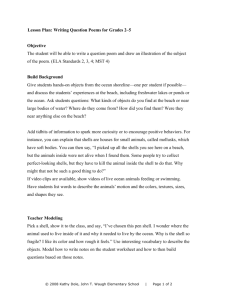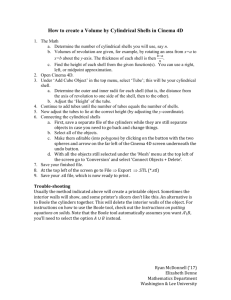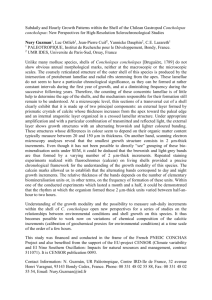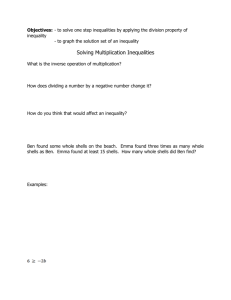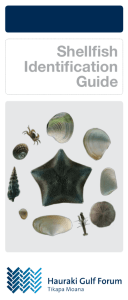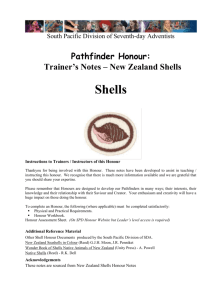oce2001_greely_Sediment_Coring_transcript
advertisement
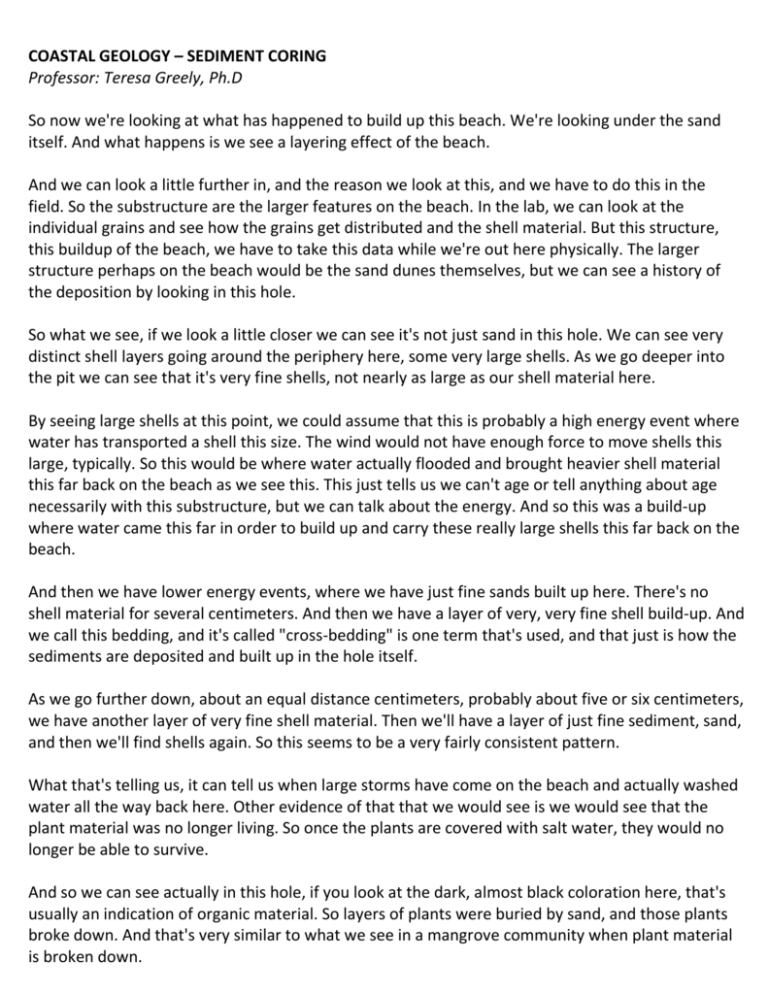
COASTAL GEOLOGY – SEDIMENT CORING Professor: Teresa Greely, Ph.D So now we're looking at what has happened to build up this beach. We're looking under the sand itself. And what happens is we see a layering effect of the beach. And we can look a little further in, and the reason we look at this, and we have to do this in the field. So the substructure are the larger features on the beach. In the lab, we can look at the individual grains and see how the grains get distributed and the shell material. But this structure, this buildup of the beach, we have to take this data while we're out here physically. The larger structure perhaps on the beach would be the sand dunes themselves, but we can see a history of the deposition by looking in this hole. So what we see, if we look a little closer we can see it's not just sand in this hole. We can see very distinct shell layers going around the periphery here, some very large shells. As we go deeper into the pit we can see that it's very fine shells, not nearly as large as our shell material here. By seeing large shells at this point, we could assume that this is probably a high energy event where water has transported a shell this size. The wind would not have enough force to move shells this large, typically. So this would be where water actually flooded and brought heavier shell material this far back on the beach as we see this. This just tells us we can't age or tell anything about age necessarily with this substructure, but we can talk about the energy. And so this was a build-up where water came this far in order to build up and carry these really large shells this far back on the beach. And then we have lower energy events, where we have just fine sands built up here. There's no shell material for several centimeters. And then we have a layer of very, very fine shell build-up. And we call this bedding, and it's called "cross-bedding" is one term that's used, and that just is how the sediments are deposited and built up in the hole itself. As we go further down, about an equal distance centimeters, probably about five or six centimeters, we have another layer of very fine shell material. Then we'll have a layer of just fine sediment, sand, and then we'll find shells again. So this seems to be a very fairly consistent pattern. What that's telling us, it can tell us when large storms have come on the beach and actually washed water all the way back here. Other evidence of that that we would see is we would see that the plant material was no longer living. So once the plants are covered with salt water, they would no longer be able to survive. And so we can see actually in this hole, if you look at the dark, almost black coloration here, that's usually an indication of organic material. So layers of plants were buried by sand, and those plants broke down. And that's very similar to what we see in a mangrove community when plant material is broken down. But what's left is this very dark lines signature. And we can see several layers of that throughout our pit, and that shows us again where the plant material was buried. We would expect to see more plant material further closer to the water where that sea grass has washed in and created the rack line, or the high tide line. That would get buried. We would expect to see a much thicker layer of that dark plant material as it's broken down. And again, remember, these things don't happen overnight. They happen over a longer period of time. But this is a very, very short, brief way, a little piece of the history of what's happened out here. We could see the storm patterns. We could track this historically with when heavy storms have come through Caladesi and see the evidence for those storms and this deposition or buildup of sand or shell material based on what we see in the layering of this structure here.
